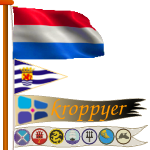Login
Support Sailonline
If you haven't already - join the SAILONLINE YACHT CLUB!
Please also consider making a donation - all amounts are greatly appreciated!
Page: First Previous 5 6 7 8 9 10 11 Next Last
|
Posted by javakeda  |
|
|
Kroppy,
Thank you for your work. How are we to read the X-axis in the tack/gybe graph? In particular, is this the initial BtSpd? And, if so, don't we need to walk up the BtSpd value to the PERF curve to determine distance lost? Need just a little more help here. --- Last Edited by javakeda at 2013-12-20 13:17:58 --- |
|
|
Posted by A2  |
|
|
Really nice work with these new graphs. Could you also include one with Time as an Axis to show how long until full recovery for a range of boat speeds as well ? --- Last Edited by A2R at 2013-12-20 14:35:47 --- None so blind |
|
|
Posted by Rod |
|
|
One thing worries me about this current work on Performance Loss----The original calculation was apparently included in the programming to prevent unlimited and frequent tacking or gybing, which would be unrealistic.
However, the equations chosen set an equally unrealistic scenario, in which a yacht could be tacked or gybed with the speed falling by MORE than 7%, without the speed decreasing for additional turns. Yet if the speed fell by less than 7% in the first turn, an additional turn would cause an additional speed decrease. This is not reasonable. If a yacht is tacked or gybed back-and-forth repeatedly, IRL, the speed will drop almost to zero. The recovery from the performance loss depends more upon the weight of the boat in relation to its sail area, rather than to the ultimate speed that the hull can attain. I mention these things because some people are obviously expending a lot of time and energy to clarify the existing Perf Loss calculations, when perhaps the original equations should instead be modified to reflect a more realistic model of IRL yacht performance. If it breaks, it's not strong enough--if it doesn't, it's too heavy. |
|
|
Posted by kroppyer  |
|
|
Rod
The performance model is not realistic, I agree. HOWEVER, the model effectively prevents tacking, gybing and hopping with an unrealistic frequency. Something that is realistic: people that put time and effort in analysing the manoeuvres are able to execute the manoeuvres slightly better in some cases. The difference might be even bigger in reality than in SOL. As far as I'm concerned, a better (more realistic) performance model does not have a high priority, there are a lot of other improvements that contribute to a more realistic experience. This brings us to the unanswered question of Klyvarn: what can we do in designing a new performance model? And how will SOL (and it's community) react to a proposition for a new model? I think we can brainstorm what we want about a new model, but the current model is good enough not to have any hurry. --- Last Edited by kroppyer at 2013-12-20 19:43:00 --- |
|
|
Posted by A2  |
|
|
I agree that the programming resources required to implement any change is not a simple undertaking.
Transparency in how the inherent behavior of your boat is affected by this penalty is what we should strive for to put us all on an equal footing. Realism is a high minded Ideal but practical considerations will be the final arbiter. Should that day arrive when these issues are addressed I propose that instead of Performance Loss we should call this a "Momentum Module" such that when pointing up performance can go higher than 100% for an appropriate length of time as well. None so blind |
|
|
Posted by javakeda  |
|
|
I remember PERF values >100%. That was the approach that VORG used. VORG was my first virtual sailing environment.
My gut feel is that PERF values >100% help the SOTP skipper and the mobile skipper by penalizing the skipper who is making frequent course "corrections" -- often software-generated. I like the concept, but am concerned about its application when there is a significant and protracted wind shift. This should be a great topic for on-going discussion. |
|
|
Posted by A2  |
|
|
IRL I neither sail boats nor write software so please excuse my naïveté.
My concept is a transition based model determined by 2 variable coefficients that reside with each boat's polar csv file. I imagine that boats take time to get up to speed as well as coast down when changing TWAs so one function would be momentum & the other time. A Momentum coefficient of 1.0 would represent a linear transition & Time its duration. Momentum greater than 1 would be slightly convex & less than 1 concave along with its duration either of which could be defined by the type of maneuver undertaken. Initially all boats could use identical coefficients, no different than it is now, but would allow for future development thereby giving each boat distinctive characteristics. Even small nuances would cause influential separation of our fleet over the course of a race using existing composite polars. --- Last Edited by A2R at 2013-12-21 06:38:01 --- None so blind |
|
|
Posted by Rod |
|
|
There seems to be some worry that I am overly concerned with realism, and that this, in some way, interferes with successful racing. While SOL is definitely a "game", nevertheless it also acts as instruction in "Introductory Ocean Navigation for Sailing Yachts".
As a long time educator, I am always very aware that I shouldn't teach some concept that is wrong merely because it is convenient, easy or fashionable. Even in this "game", therefore, I think that the performance of a yacht while changing course, tacking or gybing, should be represented as accurately as possible, just as much as it is in it's normal performance as represented by the many different Polar Diagrams that we use in each race. One standard Polar Diagram for all yachts would be as wrong as one standard Perf Loss equation. While a clipper ship and an 18 ft Australian skiff may both attain speeds of 15 knots, their perf loss and recovery would be very different. I would suggest therefore that the "Dev Dudes" be requested to re-think this part of the SOL program. "IF" they do so, much of this effort to clarify the existing 'Perf Loss' problem would be wasted. --- Last Edited by Rod at 2013-12-21 15:36:42 --- If it breaks, it's not strong enough--if it doesn't, it's too heavy. |
|
|
Posted by Klyvarn |
|
|
I can see there are a few SOLers really engaged in the performance model.
In SOL of today, there are obviously a lot of matters, more unrealistic than the performance model. What can it be ? Is it an improvement of realism to let the SOLers do high numbers of turnings? Erasing lines of programming code might also make an improvement. |
|
|
Posted by Rod |
|
|
On the contrary! I would suggest a perf loss equation based upon the weight of the boat and it's speed. A light boat will obviously slow more quickly than a heavy boat, but will recover its speed (Accelerate) more quickly too. A heavy boat will take much longer to slow down, so will lose less speed during a turn/tack/gybe, but will also regain speed much more slowly.
On further consideration of the overall problem of the perf loss calculation, I have come to the conclusion that the fault lies with that 93%/7% divider. It is that divider that is un-realistic, and the main cause of the problem. If that 93/7 divider was eliminated, repeated turns in a short time would reduce boat speed close to zero---which is, after all, the ONLY purpose in having the perf loss calculation at all!! If it breaks, it's not strong enough--if it doesn't, it's too heavy. |
Page: First Previous 5 6 7 8 9 10 11 Next Last
Please login to post a reply.Races
Next Race: 00d 00h 00m
Current Races:
Raja Muda Selangor 2025 - Penang to Langkawi
Welcome to the third online race of the Raja Muda Selangor International offshore series – a 70nm final trip further north again up the Malacca Strait from Penang to the exotic island of Langkawi, and again in J-109s.
Race #1963
INFO by brainaid.de
J-109 PARTICULARS
WX Updates:
0430 / 1030 / 1630 / 2230
Ranking: RMS - SYC
Race starts: Nov 20th 04:00
Registration Open!
Raja Muda Selangor 2025 - Pangkor to Penang
Welcome back on board your J-109 for our second online offshore race in cooperation with the Raja Muda Selangor International organisation – an 80nm trip from Pangkor north up the Malacca Strait to Penang.
Race #1962
INFO by brainaid.de
J-109 PARTICULARS
WX Updates:
0430 / 1030 / 1630 / 2230
Ranking: RMS - SYC
Race starts: Nov 17th 04:00
Registration Open!
Raja Muda Selangor 2025 - Port Klang to Pangkor
Sailonline is delighted to be able to offer online sailors an opportunity to once again compete in all three of the offshore races of the Raja Muda Selangor International race week, organised by the Royal Selangor Yacht Club in association with the RORC, and commencing with a 75nm trip from Port Klang to Pangkor. This year we will be racing this race, and the other two, which together will count towards our Sailonline Raja Muda Series (RMS), in J-109s.
Race #1961
INFO by brainaid.de
J-109 PARTICULARS
WX Updates:
0430 / 1030 / 1630 / 2230
Ranking: RMS - SYC
RACE CLOSE: Thursday,
November 20 at 2300 UTC.
Race starts: Nov 15th 04:00
Registration Open!
Africa by Sea 2025 - Suez to Port Said
When Napoleon (briefly) occupied Egypt at the turn to the 19th C, he ordered his expedition’s Directeur des Ponts et Chaussées, Jacques-Marie Le Père, to evaluate the ancient, derelict, infilled course of a Ptolemaic canal connecting the Red Sea to the Nile via the Great Bitter Lake, versus a new canal to the Mediterranean directly. Neither were considered feasible – locks to climb a pauvre-surveyed 10m sea-level difference, or continuous dredging of the Nile, would both be equally financially prohibitive. Fifty years passed before the unlikeliness of Le Père’s survey finding was challenged and a French Compagnie Universelle du Canal Maritime de Suez obtained a 99-year concession from the Khedive of Egypt, Said Pasha, to construct and operate a canal from the Red Sea to the Mediterranean, much against the will of the Ottoman Sultan, Abdulmecid I (the Pasha’s nominal overlord), and the wishes of the (Irish) British prime minister, Lord Palmerston. The year was 1859, the very number of this race (planning, dear boy, planning!), which, despite the canal’s double-super-tanker gauge and lack of locks, is strictly prohibited to sailors IRL. But not SOLers! 85nm in Fareast 28Rs to complete your circumnavigation of Africa!
Race #1859
INFOby brainaid.de
Fareast 28R PARTICULARS
WX Updates:
0430 / 1030 / 1630 / 2230
Ranking: SYC - ABS
RACE CLOSE: Tuesday,
November 18 at 2300 UTC.
Race starts: Nov 12th 17:00 Registration Open!
GO TO RACE
Round Hong Kong TIMED Race 2025

Race #1964
INFOby brainaid.de
Cape 31 Particulars
WX Updates:
0430 / 1030 / 1630 / 2230
Ranking:
TRQ4 - TRCH - SUPSOL - SYC
RACE CLOSE: Saturday,
22 November at 23:00 UTC
Race starts: Nov 09th 12:00 Registration Open!
GO TO RACE
Fernando de Noronha to Faroe 2025

PRIZE: SMPF
Race #1960
INFO by brainaid.de
Ragamuffin 100 PARTICULARS
WX Updates:
0430 / 1030 / 1630 / 2230
Ranking: RWW - OCQ4 - OCCH - SUPSOL - SYC
RACE CLOSE: Monday,
November 24 at 2300 UTC.
Race starts: Nov 03rd 11:00 Registration Closed
GO TO RACE
Sinbad by Balloon 2025 - Carnarvon to Dondra
From here, our home in Bharatavarṣa is now north west of us – said Sinbad to his fellow balloonists. Perhaps we can ride the wind first further north, and then catch the winds that every year bring the rain, perhaps not. It’s 2600nm and we could be aloft awhile, so, Master el-Quarters, victuals only, no sandbags, provisioning the giant hamper. It will be not a picnic!
Race #1886
INFOby brainaid.de
SOL Balloon PARTICULARS
WX Updates:
0430 / 1030 / 1630 / 2230
Ranking: SYC - SBB
Race starts: Oct 15th 11:00 Registration Closed
GO TO RACE
SYC Ranking
Series
- SYC ranking
- 2025 TS
- 2025 TRQ4
- 2025 TRQ3
- 2025 TRQ2
- 2025 TRQ1
- 2025 TRCH
- 2025 TD
- 2025 SuperSOLer
- 2025 SSANZ
- 2025 SPRCH
- 2025 SPQ4
- 2025 SPQ3
- 2025 SPQ2
- 2025 SPQ1
- 2025 SHE
- 2025 SBB
- 2025 RWW
- 2025 RMI
- 2025 RED
- 2025 OCQ4
- 2025 OCQ3
- 2025 OCQ2
- 2025 OCQ1
- 2025 OCCH
- 2025 NT
- 2025 LOOR
- 2025 DN
- 2025 B2B
- 2025 ARQ4
- 2025 ARQ3
- 2025 ARQ2
- 2025 ARQ1
- 2025 ARCH
- 2025 ABS
- 2024 TS
- 2024 TRQ4
- 2024 TRQ3
- 2024 TRQ2
- 2024 TRQ1
- 2024 TRCH
- 2024 TD
- 2024 SVF
- 2024 SUPerSOLer
- 2024 SSANZ
- 2024 SPRQ4
- 2024 SPRQ3
- 2024 SPRQ2
- 2024 SPRQ1
- 2024 SPRCH
- 2024 SHE
- 2024 RTW
- 2024 RMS
- 2024 OCQ4
- 2024 OCQ3
- 2024 OCQ2
- 2024 OCQ1
- 2024 OCCH
- 2024 LOOR
- 2024 HILAT
- 2024 GWT
- 2024 DN
- 2024 CRW
- 2024 B2B
- 2024 ARQ4
- 2024 ARQ3
- 2024 ARQ2
- 2024 ARQ1
- 2024 ARCH
- 2023 TS
- 2023 TRQ4
- 2023 TRQ3
- 2023 TRQ2
- 2023 TRQ1
- 2023 TRCH
- 2023 TD
- 2023 SVS
- 2023 SUPerSOLer
- 2023 SSANZ
- 2023 SPRQ4
- 2023 SPRQ3
- 2023 SPRQ2
- 2023 SPRQ1
- 2023 SPRCH
- 2023 SHE
- 2023 RTW
- 2023 RNI
- 2023 RMS
- 2023 PIC
- 2023 OCQ4
- 2023 OCQ3
- 2023 OCQ2
- 2023 OCQ1
- 2023 OCCH
- 2023 LOOR
- 2023 DN
- 2023 ARQ4
- 2023 ARQ3
- 2023 ARQ2
- 2023 ARQ1
- 2023 ARCH
- 2022 TRQ4
- 2022 TRQ3
- 2022 TRQ2
- 2022 TRQ1
- 2022 TRCH
- 2022 TD
- 2022 Tall Ships
- 2022 SUPerSOLer
- 2022 SSANZ
- 2022 SSA
- 2022 SPRQ4
- 2022 SPRQ3
- 2022 SPRQ2
- 2022 SPRQ1
- 2022 SPRCH
- 2022 SHE
- 2022 OCQ4
- 2022 OCQ3
- 2022 OCQ2
- 2022 OCQ1
- 2022 OCCH
- 2022 NTR
- 2022 LOOR
- 2022 CTR
- 2022 ARQ4
- 2022 ARQ3
- 2022 ARQ2
- 2022 ARQ1
- 2022 ARCH
- 2021 TRQ4
- 2021 TRQ3
- 2021 TRQ2
- 2021 TRQ1
- 2021 TRCH
- 2021 TD
- 2021 Tall Ships
- 2021 SYCQ4
- 2021 SYCQ3
- 2021 SYCQ2
- 2021 SYCQ1
- 2021 SYCCH
- 2021 SUPerSOLer
- 2021 SSANZ
- 2021 SPRQ4
- 2021 SPRQ3
- 2021 SPRQ2
- 2021 SPRQ1
- 2021 SPRCH
- 2021 Shetland
- 2021 PAC6
- 2021 OCQ4
- 2021 OCQ3
- 2021 OCQ2
- 2021 OCQ1
- 2021 OCCH
- 2021 ESRW
- 2020 TSE
- 2020 TSA
- 2020 TRQ4
- 2020 TRQ4
- 2020 TRQ3
- 2020 TRQ2
- 2020 TRQ1
- 2020 TRCH
- 2020 Tasman Double
- 2020 SYCQ4
- 2020 SYCQ3
- 2020 SYCQ2
- 2020 SYCQ1
- 2020 SYCCH
- 2020 SUPerSOLer
- 2020 SSANZ
- 2020 SRQ4
- 2020 SRQ3
- 2020 SRQ2
- 2020 SRQ1
- 2020 SPRCH
- 2020 Shetland
- 2020 RTW
- 2020 RNI
- 2020 Odyssey
- 2020 OCQ4
- 2020 OCQ3
- 2020 OCQ2
- 2020 OCQ1
- 2020 OCCH
- 2020 A3
- 2019 TRQ4
- 2019 TRQ3
- 2019 TRQ2
- 2019 TRQ1
- 2019 TRCH
- 2019 Tasman Double
- 2019 Tall Ships
- 2019 SYCQ4
- 2019 SYCQ3
- 2019 SYCQ2
- 2019 SYCQ1
- 2019 SYCCH
- 2019 SUPerSOLer
- 2019 SSANZ
- 2019 SRQ4
- 2019 SRQ3
- 2019 SRQ2
- 2019 SRQ1
- 2019 SPRCH
- 2019 Shetland
- 2019 Round New Zealand
- 2019 OCQ4
- 2019 OCQ3
- 2019 OCQ2
- 2019 OCQ1
- 2019 OCCH
- 2018 TRQ4
- 2018 TRQ3
- 2018 TRQ2
- 2018 TRQ1
- 2018 TRCH
- 2018 Tasman Double
- 2018 Tall Ships
- 2018 SUPSOL
- 2018 SSANZ Triple
- 2018 SRQ4
- 2018 SRQ3
- 2018 SRQ2
- 2018 SRQ1
- 2018 SPRCH
- 2018 Shetland
- 2018 Shackleton Challenge
- 2018 OCQ4
- 2018 OCQ3
- 2018 OCQ2
- 2018 OCQ1
- 2018 OCCH
- 2018 40CH
- 2017 TS RDV
- 2017 TRQ4
- 2017 TRQ3
- 2017 TRQ2
- 2017 TRQ1
- 2017 TRCH
- 2017 Tasman Double
- 2017 Tall Ships
- 2017 SWR
- 2017 SUPSOL
- 2017 SSANZ Triple
- 2017 SSANZ RNI
- 2017 SPRR3
- 2017 SPRR2
- 2017 SPRR1
- 2017 SPRCH
- 2017 Red Dot
- 2017 OCQ4
- 2017 OCQ3
- 2017 OCQ2
- 2017 OCQ1
- 2017 OCCH
- 2017 40CQ3&4
- 2017 40CQ1&2
- 2016 TRQ4
- 2016 TRQ3
- 2016 TRQ2
- 2016 TRQ1
- 2016 TRCH
- 2016 Tasman Double
- 2016 Tall Ships
- 2016 SUPSOL
- 2016 SSANZ Triple
- 2016 SRQ4
- 2016 SRQ3
- 2016 SRQ2
- 2016 SRQ1
- 2016 SPRCH
- 2016 RTWR
- 2016 OCQ4
- 2016 OCQ3
- 2016 OCQ2
- 2016 OCQ1
- 2016 OCCH
- 2016 Corporate Open Gold
- 2016 A3
- 2015 TRQ4
- 2015 TRQ3
- 2015 TRQ2
- 2015 TRQ1
- 2015 TRCH
- 2015 Tasman Double
- 2015 Tall Ships
- 2015 SYQ4
- 2015 SYQ3
- 2015 SYQ2
- 2015 SYQ1
- 2015 SYCCH
- 2015 SUPSOL
- 2015 SSANZ Triple
- 2015 SRQ4
- 2015 SRQ3
- 2015 SRQ2
- 2015 SRQ1
- 2015 SPRCH
- 2015 OCQ4
- 2015 OCQ3
- 2015 OCQ2
- 2015 OCQ1
- 2015 OCCH
- 2015 Aegean Rally
- 2014 Timed Races Championship
- 2014 Tasman Double
- 2014 Tall Ships
- 2014 SYC Championship
- 2014 SSANZ Trio
- 2014 SSANZ RNI
- 2014 Sprints Championship
- 2014 Scandinavian Tour
- 2014 Round The World Race
- 2014 Ocean Championship
- 2014-2015 Sailonline World Race
- 2013 Tall Ships
- 2013 SYC Championship
- 2013 SSANZ B&G Simrad
- 2013 Capt Anderson
- 2012 W Australia Regatta
- 2012 Tall Ships
- 2012 SSANZ B&G Simrad
- 2012 RNZ Two Handed
- 2012 Global Challenge
- 2012 Ecker Cup
- 2012 Black Sea
- 2012 A3
- 2011 Vancouver Island
- 2011 Tasman Double
- 2011 SSANZ B&G Simrad
- 2011 SOL Global Challenge
- 2011 SJORA Series
- 2011 Scandinavian Tour
- 2011 Round North Island
- 2011 Asian Sprints
- 2011-2012 SOL World Race
- 2010 Tasman Double
- 2010 Ouzo Rally
- 2010 Iberian Tour
- 2010 Auckland Regional
- 2009 French SOLo
- 2009 Bosphore - Bretagne
- 2008 SYCC
- 2008 -2013 SYC Week Race Championship
- 2008 -2013 SYC Week-End Race Championship
- 2008 -2013 SYC Ocean Race Championship
- 2008-2009 Sailonline Ocean Race
- 2004 LOOR
Mobile Client
SYC members have the benefit of access to our mobile/lightweight web client!

